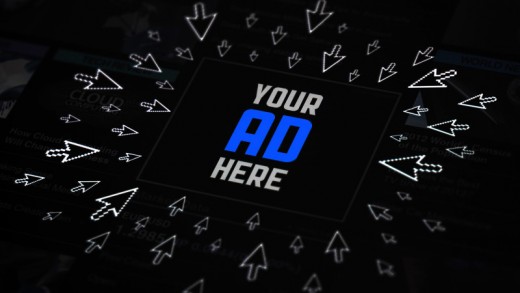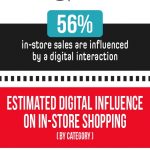A day of reckoning for digital display promoting?
As fb backs far from its DSP plans for Atlas, columnist Wayne St. Amand takes a have a look at the transferring digital show panorama and what’s in advance for advertisers.

facebook lately announced that its efforts to construct a requirement-side platform (DSP) leveraging its Atlas and LiveRail technologies had now not long gone precisely as planned, and that it will not center of attention on seeking to programmatically promote digital display advert inventory.
we all know facebook had been checking out this path to market for some time — at least since the latter half of of 2015 — so why this crucial about-face?
quality is at the heart of the subject.
What facebook found out in its testing used to be that the quality of DSP advert stock isn’t up to facebook requirements. right here’s what Dave Jakubowski, head of ad know-how at facebook, stated in a blog publish:
We came up towards many unhealthy commercials and fraud (like bots). whereas we had been fortuitously able to root out the dangerous actors and only purchase high quality advertisements, we had been amazed by using the volume of valueless inventory… We knew that in just right judgment of right and wrong, we couldn’t sell what Atlas and our people-primarily based dimension instructed us was valueless. unfortunately, those advertisements had been almost certainly dumped into some other low-quality exchange where all of them had been perhaps bought.
so much has already been written concerning the state of digital show and its problems with quality and outright fraud, so we gained’t go any deeper here. That mentioned, digital show remains to be a major and rising trade, however native social advertising is its greatest danger, and for good motive.
Let’s take a better take a look at the numbers and trade dynamics.
The evolution of the paid media panorama
How is paid media investment trending, and what are the implications of this shift?
industry information express the growing value of native social promotion. Forrester’s US Digital advertising Forecast 2014 to 2019 displays that social advertising is growing much sooner — at just about twice the speed of digital display, and 2.5 occasions the speed of search — 24 percent CAGR (compound annual boom fee) (social) vs. 13 p.c CAGR (display) vs. 10 % CAGR (search).
Native social promoting is also having a good impression on commerce. in line with an IPG Media Lab study, customers’ purchase intent associated with native social commercials was once fifty two %, in comparison with simply 34 p.c for show advertisements. These knowledge tell us that no paid media strategy is complete with out a social commercials investment.
As I see it, the paid media landscape has advanced into two major segments that share a number of traits, in addition to some vitally vital differences.
Let’s begin with show on one side. Publishers supply up inventory to advertisers, and the DSPs use real-time bidding (RTB) exchanges to enable those advertisers to regulate and report on large-scale show campaigns across digital, but not social, channels.
DSPs assist publishers promote remnant stock that they couldn’t monetize straight away, in most cases at a lower cost to advertisers. Banner dimensions apart, these traditional DSPs generally treat placement stock and eyeballs as commodities, which naturally drives down prices and earnings.
This commoditizing drive and all of the possible negatives that go along with it’s a dynamic that facebook and most different social channels seem keen to avoid as they construct out their commercials ecosystems.
On the opposite side, we’ve the native social advertising players, led with the aid of facebook and together with Instagram, Twitter, Pinterest and LinkedIn. in fact, each and every channel has its personal principles, terminology, concentrated on machine and inventive requirements, so this has created a necessity for intermediation to streamline the methods that take place at the back of the scenes during campaigns.
These multi-channel and move-channel social ad tech suppliers may also be viewed as a suite of “social DSPs.” The social DSPs let advertisers to manage, optimize and report on large-scale advertising campaigns throughout explicit social channels.
conventional display DSPs vs. social DSPs
the important thing difference between the traditional display DSPs and the social DSPs is that the former are creating commoditization by owning the auctions, successfully cannibalizing the market and their very own lifeblood, and the latter are interfacing with the auctions owned and operated with the aid of the social channels. this is where the major shift is beneath approach.
in short, this trade dynamic and its implications for each respective gadget are root motives for the differing growth rates in social advertising and show merchandising.
after all, some may argue that show is additional along in its maturity and scale, and that’s leading to slower percentage boom and smaller beneficial properties. i might argue the variation in maturity between these two markets isn’t sufficient to account for the adaptation.
additionally, it’s absolutely proper that the social channels are doing a a lot better job of shielding high quality and combating fraud than the rankings of smaller publishers and networks serving the arena of show. As the rise of social merchandising automation makes it more straightforward for advertisers to serve impressions throughout the social DSPs, the tide is surely moving.
It’s simplest a topic of time before social promotion is as plug-and-play for advertisers as programmatic buying has made display promotion. if so, this is when the levees will break.
To summarize, display DSPs with actual-time bidding are appearing as a commoditizing power for display advert inventory with precipitously falling CPMs. the alternative is true for native social, where actual-time bidding across channels and inventory isn’t approved.
In social, target audience price and CPMs stay regular and better as each and every platform walls itself off intelligently to stop the same commoditizing forces that have punished conventional display stock, to not mention the whole market.
the rise of cellular gives native a leg up
the upward thrust of cellular also offers an part to native social systems, as DSPs have more difficulty monitoring performance accurately and retargeting on cell. Cookies crumble on mobile.
This has given upward thrust to individuals-based totally marketing applied sciences that work best possible in native and permit tracking across mobile and personal computer contact points with the aid of connecting experiences across individual human identities, no longer cookies — namely, facebook’s Atlas.
as a result of they handle control over the auctions, facebook and other native social structures are conserving the worth of their inventory and resisting the commoditization and demanding quality issues going through conventional DSP-linked exchanges.
Advertisers will all the time wish to buy advert stock with a better worth to drive a better spend/result ratio. relating to top quality ads and verifiable industry results, fb certainly has the higher hand.
by means of halting its plans to carry people-based advertising to the display world, fb seems to be placing a gamble that the quality, keep watch over and relevance of native social merchandising are sufficient to verify victory in the end.
Some opinions expressed on this article may be these of a visitor author and now not essentially advertising Land. staff authors are listed here.
(Some images used beneath license from Shutterstock.com.)
marketing Land – web advertising news, strategies & tips
(18)















